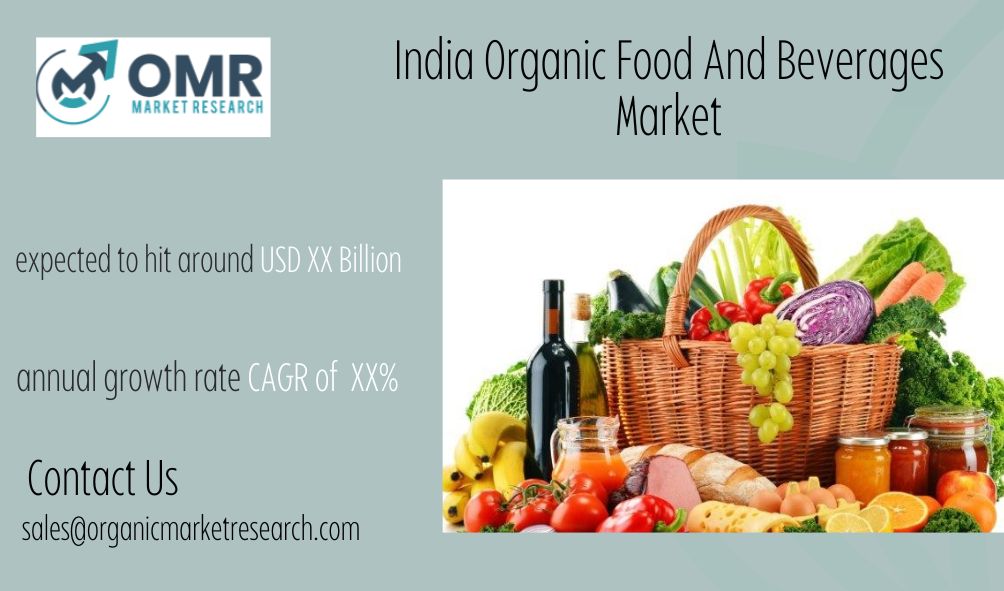Global E-methanol market size was USD 235.10 Million in 2023 and the market is projected to touch USD 1679.6 Million by 2032, at a CAGR of 26.65 % during the forecast period. E-methanol manufacturing facilities have risen due to government backing and continued technological improvements. The price of hydrogen and carbon dioxide sources has a substantial impact on the cost of producing e-methanol, which typically varies from USD 800-2400/ton based on the carbon dioxide method. To make E-methanol, for instance, the first plant in Iceland uses carbon dioxide and renewable hydrogen from a geothermal plant.
The drive to scale up manufacturing, the growing need for sustainable and renewable fuel, the increasing incorporation of e-methanol in chemical raw materials, the escalation of feedstock competition, legislative support, a sharp growth in demand rate, and economic feasibility are some of the key drivers. These characteristics highlight the potential of e-methanol as a flexible and long-term fuel option during the switch to cleaner energy. The demand for e-methanol is growing at an exponential rate. The demand for e-methanol has increased due to growing environmental concerns and the ongoing need for sustainable fuels. Furthermore, the market is expanding because to the rising demand for electric vehicles and the need for sustainable energy sources to displace outdated fossil fuels in a number of industries. The largest methanol manufacturer in the world, Methanex, predicted in April 2023 that over the next five years, there will be a rise in methanol demand of about 14 million mt globally. A gradual transition to renewable methanol supports this trajectory of development. However, the International Renewable Energy Agency (IRENA) also declared that it anticipates producing 250 million metric tons of e-methanol annually by 2050.
Global E-methanol dynamics
The factors influencing the dynamics of the Global E-methanol market include regulatory mandates, technological advancements, and increasing industrial safety awareness. Global demand for e-methanol is growing at an exponential rate due to the ongoing need for sustainable and renewable fuel in several industries, including transportation, chemical manufacture, and power generation. The growth of e-methanol is being accelerated by advances in renewable energy technology, which enable efficient production by water electrolysis using energy sources such as solar, wind, and hydroelectric power. As a flexible energy source, this green fuel supports the transition to a circular economy, energy security, and grid stability. For example, SunGas Renewables announced in November 2023 that it was chosen to supply green methanol for a new USD 1.4 Million plant in Northern Tasmania by ABEL Energy, an Australian green hydrogen and ethanol project developer. The Bell Bay Power Fuels Project by ABEL Energy aims to produce 300,000 tons of green methanol per year. This is the equivalent of three times Australia’s current methanol consumption and 540,000 tons less CO2 emissions annually from transporting fuel.
Global E-methanol drivers
Growing Demand for Sustainable and Low-Carbon Fuels
The market for e-methanol is driven by the rising demand for low-carbon and sustainable fuels worldwide. There’s a big push for alternative fuels that can slow down climate change as nations and industry work to meet strict environmental requirements and lower their carbon footprints. Since e-methanol is created using renewable energy sources and carbon dioxide that has been absorbed, it is regarded as a carbon-neutral fuel and is therefore a desirable choice for lowering greenhouse gas emissions. Its use in a variety of applications, such as shipping, industrial operations, and transportation, supports international efforts to switch to a more sustainable energy system. The demand for e-methanol as a competitive substitute for traditional fossil fuels is being driven by governments and organizations that are putting laws and incentives in place to encourage the use of clean fuels.
Advancements in Renewable Energy and Carbon Capture Technologies
The advancements in carbon capture and renewable energy technology are important factors propelling the e-methanol market. The ability to produce e-methanol depends on the availability of plentiful and reasonably priced renewable electricity, which is usually generated by hydropower, solar power, or wind. As renewable energy continues to decrease in cost and is deployed more widely around the world, e-methanol production becomes more economically viable. Additionally, the effective absorption of carbon dioxide from industrial emissions or straight from the environment is made possible by developments in carbon capture and utilization (CCU) technologies. The e-methanol produced from these sequestered carbon emissions can subsequently be utilized as feedstock. To fulfill the increasing demand for sustainable fuels and scale up e-methanol production, there needs to be constant innovation and investment in carbon capture technology and infrastructure for renewable energy.
Click here: https://organicmarketresearch.com/global-e-methanol-market
- Restraints:
High Production Costs
The high expenses of synthesising e-methanol contribute to its commercialization. The complicated steps involved in producing e-methanol include electrolyzing water to create hydrogen and removing carbon dioxide, then catalyzing the synthesis of methanol. These operations need a lot of energy, which is usually obtained from renewable electricity sources and might be expensive. Moreover, the development and upkeep of the infrastructure required for methanol synthesis, electrolysis, and carbon capture is costly. E-methanol is less competitive than traditional methanol made from coal or natural gas due to its high production costs, particularly in markets where fossil fuels are still reasonably priced. The widespread deployment of e-methanol may be restricted until technology breakthroughs and economies of scale considerably reduce these production costs.
Limited Infrastructure and Supply Chain Development
A significant impediment at the moment is the absence of e-methanol supply chain development and infrastructure. E-methanol requires specific infrastructure that is not currently generally available for its production, storage, transit, and distribution. To produce e-methanol, for example, may be more difficult to convert than existing methanol production facilities, which are largely built for methanol derived from fossil fuels. Likewise, in order to ensure efficiency and safety, systems for storage and transportation must be built to manage the unique characteristics of e-methanol. Coordination and substantial funding from a range of stakeholders, including governments, businesses, and technology companies, are needed to construct such infrastructure. The increased production of e-methanol and its incorporation into current energy systems may be impeded by the sluggish pace of infrastructure construction, which would limit market expansion.
- Opportunities:
Increasing Demand for Green Maritime Fuels
The marine sector is facing tremendous pressure to lower its carbon footprint and abide by the strict environmental standards established by global organizations such as the International marine Organization (IMO). Because e-methanol emits fewer emissions than conventional marine fuels, it offers a potential future as a green marine fuel. The IMO has set high goals for lowering sulfur oxide and greenhouse gas emissions, and e-methanol can help maritime firms reach these goals. Furthermore, e-methanol is a more feasible option for retrofitting both new and old ships because it is simpler to handle and store than other alternative fuels like hydrogen and ammonia. The e-methanol market is predicted to see substantial expansion as a result of the expected increase in the use of e-methanol as a marine fuel and the growing need for sustainable shipping solutions.
- Segment Overview
By Type, The E-methanol market is segmented into Ferrosilicon Plant, Biogas Plant, Cement Plant, MSW And Biomass, and others. E-methanol is produced from the plants using the hydrogen-rich off-gases and carbon monoxide from the ferrosilicon manufacturing process. These gases are perfect for the synthesis of methanol. This type of e-methanol production is advantageous since it employs industrial waste gases, which lowers waste and encourages sustainability. E-methanol is produced by the anaerobic digestion of organic materials, including manure, agricultural waste, & municipal solid waste. Biogas facilities provide this product. The biogas is processed and then transformed into e-methanol. Because it reduces greenhouse gas emissions and turns renewable organic waste into a useful chemical feedstock, this process is incredibly sustainable. These markets are essential to the growth of the e-methanol industry because they offer sustainable substitutes for traditional methanol production and aid in the worldwide push for carbon neutrality and the use of renewable energy sources.
By Application, The E-methanol market is segmented into Formaldehyde, MTBE, Gasoline, Dimethyl Ether, Solvents, Others. The fuel industry depends on e-methanol due to its importance is an essential feedstock for the production of formaldehyde, which is used to make resins, plastics, and other chemicals. It also plays a key role in the production of MTBE, which improves gasoline’s octane rating and reduces engine knocking. Moreover, e-methanol can be merged directly into gasoline as an alternative fuel, resulting in cleaner combustion and lower emissions. Lastly, it is a primary input for the production of dimethyl ether, which could replace diesel in transportation and serves as a propellant for aerosol products. All of these applications highlight e-methanol’s versatility as well as its significant role in growing sustainable chemical processes and energy solutions.
Global E-methanol Overview by Region
Europe has dominated the e-methanol market for a number of reasons. First off, the region’s booming chemical industry which is particularly strong in Germany sees green methanol as a sustainable feedstock that will spur innovation and environmentally friendly practices. Second, significant legislative initiatives to decarbonize maritime transportation have been initiated throughout Europe, encouraging the use of green methanol. Additionally, the e-methanol market is significantly fueled by Europe’s ongoing demand for environmentally friendly chemicals and fuels, with some businesses considering methanol as a decarbonization fuel. For example, P1 Fuels & Carbon Recycling International decided to supply Germany with an e-methanol manufacturing plant in July 2023. Through this partnership, affordable e-fuels for internal combustion engine vehicles will be made available by fusing P1’s methanol-to-gasoline technology with CRI’s emissions-to-liquids technology. A demonstration facility and industrial-scale activities are planned for the future, and the agreement, which was unveiled at COP28, demonstrates a commitment to sustainable fuel alternatives and green technologies.
Global E-methanol market competitive landscape
Leading companies such as Orsted A/S, Siemens Energy AG, BASF SE, European Energy A/S, European Energy A/S , Carbon Recycling International, Uniper SE, Tractebel Engineering GmbH, Elyse Energy, Henan Shuncheng Group., Dow, Swiss Liquid Future/Thyssenkrupp, ABEL and Thyssenkrupp and Dalian Institute of Chemical Physics. The players are working together on a number of initiatives because of the increasing demand for e-methanol, its potential to act as a carrier of hydrogen and its ability to ease the switch to green hydrogen. E-methanol projects are more appealing because to the growing need for cleaner energy alternatives, the expansion of the chemical industry, which uses methanol feedstock, and the growing need for sustainable energy solutions. In 2023, European Energy A/S announced that it was building the world’s largest CO2-to-green methanol production facility in Denmark, with an estimated yearly capacity of 32,000 tons. The facility will use Clariant’s Megamax catalyst for methanol synthesis; this catalyst is well-known for its high activity and stability in the CO2-to-methanol conversion process. The goal of this initiative is to produce green methanol that will help the maritime transportation and chemical sectors.
Contact Us:
Mob : +91 9319642100
Noida One Tower Sec 62 Noida 201301
Sales : sales@organicmarketresearch.com
Website : https://www.organicmarketresearch.com















